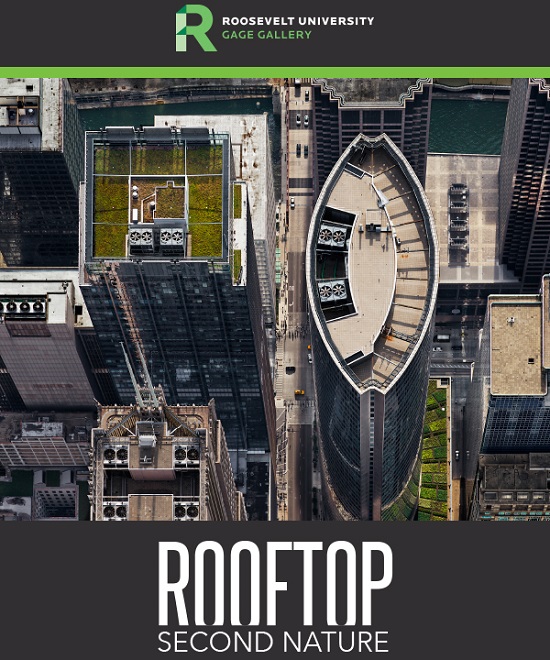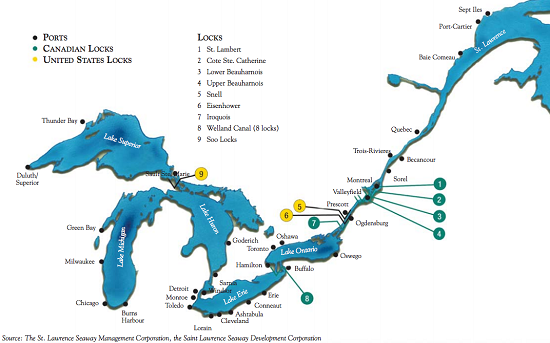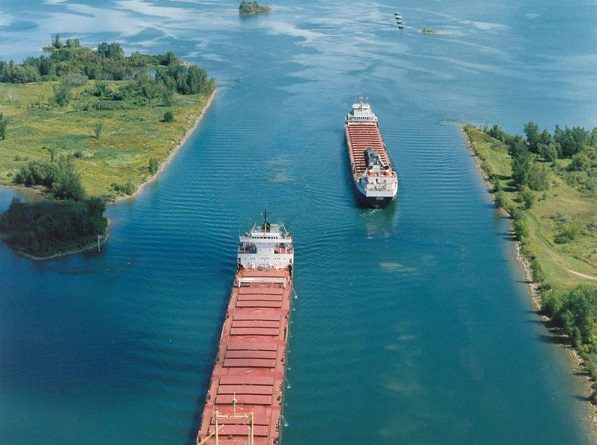April 29 & 30, 2017 – A Sunday Kind of Show
![]() Saturday, April 29 – Sustainability on the rooftops
Saturday, April 29 – Sustainability on the rooftops
It’s a new day–actually, a new couple of days–for The Mike Nowak Show with Peggy Malecki. Starting this weekend, we’re branching out onto Sunday mornings. In a way, it’s kind of returning to the roots of the show which, for many years, called the 9 to 11am slot on Sunday mornings its home.
Well, we’re back…but with a difference: we will continue broadcasting on Saturday mornings, too, at our regular time of 10 to 11am. To recap, here’s the new schedule for The Mike Nowak Show on 1590 WCGO:
- Saturday: 10 to 11am (following Mighty House Home Improvement Radio)
- Sunday: 9 to 11am (following Mike Jackson Outdoors)
Today Peggy and I welcome photographer Brad Temkin and Michael Bryson, professor and director of Sustainability Studies at Roosevelt University in Chicago. I have never met Brad, but Michael and I go back a few years. In fact, we we were teammates in the CTSL–the Chicago Theatre Softball League. That was before he went on to start the Sustainability Studies program, along with Carl Zimring, who was on the program a couple of weeks ago. I went on to…well, never mind.
 But back to photography. Temkin’s show, Rooftop: Second Nature opened on February 9 of this year at Roosevelt University’s Gage Gallery, 18. S. Michigan Ave., Chicago and runs through Friday, May 6. Hours are 9 a.m. to 5 p.m. weekdays and 10 a.m. to 4 p.m. on Saturdays. Temkin’s works are included in numerous permanent collections, including those of The Art Institute of Chicago; Milwaukee Art Museum; Corcoran Gallery of Art, Washington, D.C.; Museum of Fine Arts, Houston; Akron Art Museum, Ohio; and Museum of Contemporary Photography, Chicago, among others.
But back to photography. Temkin’s show, Rooftop: Second Nature opened on February 9 of this year at Roosevelt University’s Gage Gallery, 18. S. Michigan Ave., Chicago and runs through Friday, May 6. Hours are 9 a.m. to 5 p.m. weekdays and 10 a.m. to 4 p.m. on Saturdays. Temkin’s works are included in numerous permanent collections, including those of The Art Institute of Chicago; Milwaukee Art Museum; Corcoran Gallery of Art, Washington, D.C.; Museum of Fine Arts, Houston; Akron Art Museum, Ohio; and Museum of Contemporary Photography, Chicago, among others.
These 20 or so large-scale images of green rooftops in Chicago and other major cities around the world were taken between 2009 and 2016. Temkin has photographed more than 100 green roofs worldwide and says that “This exhibit is about a vision to make our environment different and better. Through it, I’ve tried to show the wonder of what is working in the urban landscape.”
While the focus on green roofs is often–and should be–about their ability to mitigate the effects of urban heat islands, Temkin also talks about the challenge of figuring out exactly how to photograph them. That means sometimes leaning out of open skyscraper windows, dangling from ladders or even hanging out of hovering helicopters. If you have a fear of heights, this is not a job for you.
Some of the featured green rooftops are on Chicago’s City Hall, Roosevelt’s Wabash Building, the new Lurie Children’s Memorial Hospital and the Chicago Cultural Center, as well as the Ford Motor Company in Dearborn, Michigan, Millennium Hall at Drexel University in Philadelphia and buildings in Switzerland, Germany, Ireland and Moscow. These sites are also part of his book Rooftop, which was published in 2015.
The exhibit is sponsored by Roosevelt’s Sustainability Studies Program, the College of Arts and Sciences and the Office of Physical Resources. the exhibit provides a look at green roofs atop Chicago’s City Hall, Roosevelt’s Wabash Building, the new Lurie Children’s Memorial Hospital and the Chicago Cultural Center, to name just a few Chicago locations.
Says Bryson about these photographs,
More broadly, though, this exhibit speaks to the vital role played by the environmental arts and humanities in envisioning a more sustainable future for humanity as well as for the millions of fellow species on our beautiful yet vulnerable planet. Thought-provoking ideas, artwork, architecture, poetry, stories, historical accounts, theater, music, and film are necessary complements to painstaking ecological analysis and pragmatic environmental policy.
Sunday, April 30 – Protecting our backyard soil, the Great Lakes and our natural predators
![]() The return of Logic Lawn Care to The Mike Nowak Show
The return of Logic Lawn Care to The Mike Nowak Show
If you’ve listened to this show over the years, you know that one of my sayings about lawns is “When in doubt, rip it out.” I say that because there are a lot of great uses for soil that have nothing to do with turf. However, I know that people love their lawns, and I know that it’s possible to grow grass without destroying our environment.
The secret is practicing the tenets of natural lawn care. The problem is that the American public has been brainwashed for decades on radio and television by the Big Lawn Industry to reach for the chemical bags. Before that, it wasn’t necessarily about the chemicals, but Americans were brainwashed by their own neighbors to create as much lawn as possible. Let’s face it: it’s an uphill battle to overcome a couple of centuries of lawn-centric propaganda.
Which is why I like Steve Neumann so much. He’s one of the people behind a company called Logic Lawn Care. Full disclosure, they advertise on The Mike Nowak Show. But I invited him on my program before they decided to become a sponsor, simply because I wanted to get the word out about natural lawn care.
Among the things that Logic Lawn Care promotes are organic fertilization, natural weed control, core aeration, use of high quality seed, Integrated Pest Management to deal with insects and diseases, and cultural practices like proper mowing and watering techniques.
I’m tellin’ ya, folks, it ain’t rocket surgery!
Steve makes another visit to the program, mainly because it’s spring and those of you who have lawns are trying to figure out how to keep them healthy. He also wants to talk about how Logic is reaching out to municipalities, park districts and schools that want to keep their turf areas healthy but safe for kids and pets. Feel free to call us at 847-475-1590 if you have any lawn care questions. I know I have a few, but you don’t want me to go on forever, do you?
Keeping the Great Lakes Great
Living as we do near Lake Michigan’s shores, it’s tempting to view the lake as an unchanging, steady backdrop of freshwater that’s healthy and thriving with native fish and wildlife. But it’s not, and our next guest, author Dan Egan, joins us this morning to talk about the past, present and imperiled future of the Great Lakes, as well as some more positive trends.
The five Great Lakes contain about 20 percent of the Earth’s surface freshwater, and provide ten of millions of  Americans and Canadians with a dependable water supply, as well as work, recreation and sustenance. The lakes have a major impact on local and global weather systems. And, they’re also home to countless other species that rely on the waters and their ecosystems. And, says Dan in his very impressive new book, The Death and Life of the Great Lakes, these systems are under more threats than ever, from invasive species like mussels and Asian carp, to industrial pollution that we’ve seen again and again, and to phosphorus run-off that’s caused toxic algae blooms and dead zones in Lake Erie. And then there are the companies that want to siphon off Great Lakes water and sell it elsewhere—for a profit, of course.
Americans and Canadians with a dependable water supply, as well as work, recreation and sustenance. The lakes have a major impact on local and global weather systems. And, they’re also home to countless other species that rely on the waters and their ecosystems. And, says Dan in his very impressive new book, The Death and Life of the Great Lakes, these systems are under more threats than ever, from invasive species like mussels and Asian carp, to industrial pollution that we’ve seen again and again, and to phosphorus run-off that’s caused toxic algae blooms and dead zones in Lake Erie. And then there are the companies that want to siphon off Great Lakes water and sell it elsewhere—for a profit, of course.
If you were paying attention in school, you likely learned the Great Lakes formed as glaciers advanced and retreated some 10,000 years ago. Until very recently, the lakes (which are all connected) were separated from both the Atlantic Ocean and the Mississippi River Basin. This meant the lakes maintained a pristine and balanced ecosystem, which was both stable and potentially fragile, says Dan. But then progress and profits changed everything, natural geologic barriers to the lakes were circumvented for shipping starting in the 1800s and non-native species like sea lamprey and river herring (aka – alewives) began to move in. Those of us who lived in Chicago in the late 60s through the mid 80s may recall periods when millions of stinking, dead alewives washed up on our lakefront. (Peggy says she remembers shoveling piles of dead fish almost daily in the mid 80s from the beach and boat launch where she was a park district employee.)
Everything changed in a big way for the lakes in 1959 when the St. Lawrence Seaway opened, throwing open the doors to international freighters carrying not only commercial cargo but invasive species as well. In the muck of ship ballast water, says Dan, have come plankton-clearing zebra and quagga mussels, water fleas, and other waves of invasives that have mightily upset the Great Lakes balance and the survival of its native species. They’ve also cost billions in infrastructure repair and environmental remediation. Today, writes Dan, there are “at least 186 non-native organisms swimming or lurking in the Great Lakes – some are invasive, some were planted and are considered by many to be an asset to the region, and others apparently exist without causing any environmental or ecological havoc.” And more threats to the lakes, like Asian carp, are lurking in the waters near Chicago and are only being held back by electrical barriers and funded budgets.
Dan is a reporter at journalist for the Milwaukee Journal Sentinel, and has the incredible job of covering the Great Lakes as his beat. A two-time finalist for the Pulitzer Prize, he’s won many accolades for his work, and we’re happy to talk with him about this very important topic.
When hunting predators becomes blood sport
In the first week of February of this year, I noticed a Facebook post by Marc Ayres, who happens to be the Illinois State Director for the Humane Society of the United States. Peggy and I met him last year when we were involved in bringing the documentary film about humane meat production, At the Fork, to Chicago, and he was interviewed on this show.

His post in February was about how he and a group of protestors had shed light on something called the Southern Illinois Predator Challenge which, in a story in the Benton Evening News, is described as “an event in which two-person teams compete to kill the most coyotes in a 24-hour period.”
This kind of “hunt” is legal in Illinois but according to Ayres, it is not necessarily ethical. Says Ayres in the Benton article, “Participants often use high-tech equipment. One of the most chilling aspects is the use of electronic calling devices to attract coyotes into rifle range with sound that imitate the cry of a coyote in distress.”
Organizers of these hunts claim that the events are necessary to keep the coyote populations in check because of the damage they do to livestock. But an editorial in the Chicago Tribune states that
the toll in Illinois is modest: Fewer than 10 percent of the sheep and lambs that die each year are killed by coyotes. Experts stress that preventive measures, from fencing to guard dogs, are the most effective remedy.
Defenders of these hunts argue that without such population control methods, coyotes would proliferate to intolerable numbers. But the Humane Society cites scientific evidence that culling stimulates reproduction and predation on livestock. The University of Illinois Extension agrees that “coyote population reduction (removing some or all of the coyotes in an area) is usually unrealistic and always temporary.” Wildlife scientist Robert Crabtree, head of the Yellowstone Ecological Research Center, says, “It cannot be over-emphasized how powerfully coyote populations compensate for population reductions.”
At any rate, on that February Sunday earlier this year, Ayres and his colleagues were able to track down the gathering place of the participants and take photos of their slaughter. But this is by no means the final chapter of this particular story. After being subjected the systematic annihilation in the United States for decades, coyotes are making a comeback. It is estimated that in Chicago alone, there are probably 2,000 of the predators, and that’s because they have been crowded out of the suburbs! Yow. You can read about Cook County coyotes here.
About the same time that Ayres and company were exposing the coyote “challenge,” the State of Illinois wrapped up its first bobcat hunting season since the 1970s. From November 10, 2016 to January 31, 2017, 141 bobcats were killed.
In the above article, Illinois Department of Natural Resources Director Wayne Rosenthal is quoted, “We are very pleased with the response to Illinois’ new hunting and trapping season for bobcats. The recovery of the bobcat is a conservation success story in Illinois. We were pleased with the response of hunters and trappers that applied for permits, and we will continue to evaluate the program.”
Which leads me to my question: if the bobcat recovery is such a huge success, why are you in a such a hurry to reduce the population again? But that’s just me.
So Ayres is supporting S.B. 1981, a bill that would change bobcat hunting in two ways: 1) It would prohibit the use of barbaric and inhumane traps and 2) It would also prohibit the sale of bobcat pelts, removing the financial incentive for greedy profiteers to exploit these rare cats for personal profit.
And who knows what else we’ll talk about? Tune in SUNDAY from 9 to 11 am!



I wish I caught the show live. I remember a hunting video put on by Duck Dynasty, where a guy bow hunting deer in a tree out of enjoy pure enjoyment Shot a bobcat sniffing below….he then try to talk it up about his life was in danger as he laughed. Hunting for food is stepping aside for sick thrill and playing with “toys”.
Wolves are now a successful reintroduced animal that is opened to the hunt to curve the misconception of old and intrigue the killer.
Thanks for your comment, Jeremy. I hope you can catch the show live some Saturday or Sunday morning. Go to the upper right top of this page to see times. If you can’t listen on AM radio, you can always stream us live at http://www.mikenowak.net. – Mike